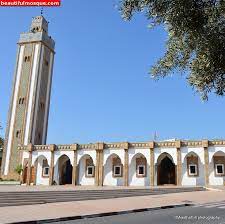Metrology and geometry in the mosque of Agadir Tlemcen
Abstract
This article retraces the history of the Mosque of Agadir, based on metrology and geometry used by the different eras the mosque has lived through. Each of these eras has made modifications and added elements that correspond to their philosophy and way of doing things. This mosque is counted among the first places of Islamic worship introduced by Muslims coming from the Arabian Peninsula in the early days when Islam set foot in North Africa. The area where the mosque was built is today known for its historical richness even before the arrival of Islam. It was occupied by Romans, which added interesting peculiarities to this mosque, were the materials used inherited from the passage of different civilizations and at the same time, all its elements enrich the metrology and the complex work done to have this proportionate and harmonious mosque.References
Abdennour, A., 1977. Notes sur quelques questions de métrologie concernant la Syrie à l'époque ottomane. Arabica, 311-325.
Akhtaruzzaman, M., & Shafie, A. A., 2011. Geometrical substantiation of Phi, the golden ratio and the baroque of nature, architecture, design and engineering. International Journal of Arts, 1(1), 1-22.
Arnold, F., 2018. Mathematics and the Islamic Architecture of Córdoba. In Arts. Multidisciplinary Digital Publishing Institute, 7(35), 1-15.
Baba Ahmed Kassab, T., 2007. Antagonism between historical spaces and urban development. Case of Tlemcen. Doctoral Thesis. EPAU. Algeria.
Bernardi, P., 2001. Mesurer les bâtiments anciens. Histoire & mesure, Paris, 16(3-4).
Boubakeur, D., 2018. L’art musulman un langage et une expression de la foi. 1-23.
Bousmaha, S., Cheikh-Zouaoui, M., & Chergui, S., 2020. The implicit parameters of the architectural aesthetic of Saoudi mosque in Chlef. Transylvanian Review, 27 (50), 15460-15470.
Bousmaha, S., Chergui, S., & Cheikh-Zouaoui, M., 2019. An assessment of the aesthetic value of the Islamic university mosque in Constantine. Journal of Islamic Architecture, 5(3), 119-128.
Cohen, M., 2013. Beyond Beauty Reexamining Architectural Proportion through the Basilicas of San Lorenzo and Santo Spirito in Florence. Centro Internazionale di Studi di Architettura Andrea Palladio Prima edizione.
Corcuff, M. P., 2012. Modularity and proportions in architecture and their relevance to a generative approach to architectural design. In Architecture, Nexus Netw J., 14(1), 53-73.
Duarte, C. W. G., 2015. Elegância e sutileza na concepção dos templos dóricos gregos (sécs V-II a. C.). Doctoral thesis,.Universidade de São Paulo.
Duarte, C. W. G., 2018. Aspectos preliminares para estudar a arquitetura dos templos gregos da antiguidade. Perspectivas e Diálogos: Revista de História Social e Práticas de Ensino, 1(2), 132-150.
Elam, K., 2001. Geometry of design: studies in proportion and composition. Princeton Architectural Press.
Fahuri, M. and Khawwam, S. A., 2002. Mawsuat waḥdat al-qiyas al-arabiyya wa-al-islamiyya wa-ma yu adiluha bi-al-maqadir al-ḥadita : al-aṭwal, al-masaḥat, al-awzan, al-makayil, al-awzan wa-al-makayil al-ṭibbiyya. Maktaba Lubnan nasirun, Bayrut,
Ghomari, F., 2007. La médina de Tlemcen : l’héritage de l’histoire. Web journal on cultural patrimony, 2(1), 11-28.
Guilhiermoz, P., 1913. De l'équivalence des anciennes mesures : A propos d'une publication récente. Bibliothèque de l’école des chartes, 74, 267-328.
Gutiérrez, C. G., 2017. Metrología y modulación en las mezquitas: propuesta de análisis a través de cuatro casos cordobeses. Arqueología de la Arquitectura, (14), 1-14.
Hernández, A. J., 2015. La metrología histórica como herramienta para la Arqueología de la Arquitectura. La experiencia en los Reales Alcázares de Sevilla. Arqueología de la Arquitectura, (12), 1-28.
Medina, F. J. R., & Galisteo, M. T. G., 2019. Antropometría aplicada a la interpretación de la arquitectura histórica. El artesonado del Salón de Caballeros XXIV de la Madraza de Granada y las dudas sobre su origen. Arqueología de la Arquitectura, (16), 1-24.
Meisner, G. B., 2018. The Golden Ratio: The Divine Beauty of Mathematics. Race Point Publishing. New York.
Pakkanen, J., & Instituutti, S. A., 2013. Classical Greek architectural design: a quantitative approach. Foundation of the Finnish Institute at Athens.
Singh, M. R., 2018. Proportions in architecture. International Journal of Research-GRANTHAALAYAH, 6(3), 126-133.
SIVERTSEN, H. and REDMAN, S., 2009. Measurements of The Gods a Legacy from a Lost Civilisation. Completely Novel Ltd, Great Britain.
Zaoui, K., 2016. Pensées sur Tlemcen d'autrefois. Les Éditions du Net, Saint-Ouen.

Copyright (c) 2021 Transylvanian Review

This work is licensed under a Creative Commons Attribution-NonCommercial-NoDerivatives 4.0 International License.



